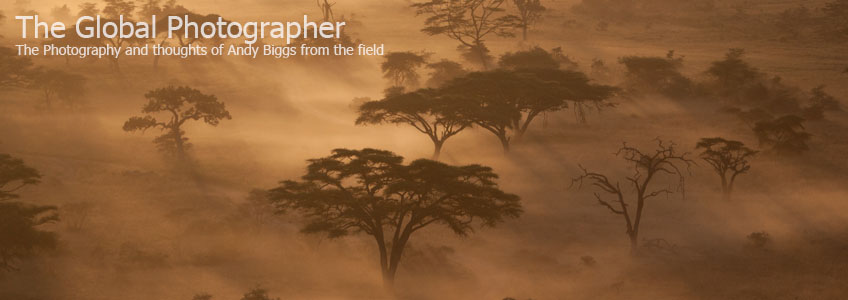We headed to Gol kopjes this morning, checked in at Naabi gate around 7:30 and immediately after coming down from the hill we saw a nice male cheetah in the short grass. He was cleaning his paws, and was quite relaxed. Awesome morning light, good subject and serene background.
We moved around in the short grass, on our way to the Gol kopjes. We had nice herds of zebra, wildebeest, kongoni, topi, thompson and grant's gazelle. Some amazing running wildebeest on every horizon. Which way to go?
That was an easy decision, as Khumbi had located another cheetah who had only moments before taken down a year old wildebeest. By the time we arrived there we had at least 20 vultures waiting for their breakfast. The large male cheetah gorged himself and left when he was done. The vultures ran in and fought for the remaining meat. Nothing like watching rippers, gulpers and scrappers in the same pile. Vultures can be grouped this way: rippers open up carcasses that may have died naturally, gulpers eat much of the meat, and scrappers wait in the wings for their last pieces. Some examples:
Nubian vulture = ripperWhite backed vulture = gulperRuppell's Griffin vulture = gulperHooded vulture = scrapperEgyptian vulture = scrapper
We followed the cheetah a little while until he sat up in the grass and then I attempted to shoot with my 6x24 camera. Hopefully the shots came out, however I have low expectations to have predator shots with the camera. 300mm is a far focal length for the camera, however I had to stop down to f/32 to make sure it had enough depth of field. This yielded 1/60 for my shutter speed, which may not be enough for the winds we had today.
The winds were quite strong rom the east today, which was a challenge to deal with for those with really long lenses.
As we came over a hill on the eastern side of the Gol kopjes, we found a huge piece of the migratory wildebeest and zebra herds. There smiles and giggles all around, as they were extraordinarily clumped up and in one spot. This made the easiest photographs, however after a few minutes they scattered and started running. Not a problem, because this was a good opportunity for blurred panning shots! Whew! I was tired by 10am, because there were so many things to photograph this morning. If I had not taken notes, I would have forgotten something.
There were tons and tons of wildebeest on the eastern side of the park, towards Piyaya and the Ngorongoro Conservation Area. The folks down at Ndutu must be bummed right now, as we must have most of the migration all around us. It is nice to have this all to ourselves before Leopard Tours, Ranger Safaris or some of the companies with lazy guides show up. They listen to our radios and have been known to follow us around. What lazy a**holes they are, and they are not doing well for their customers. There are some exceptions, however I have found too many. There are some great companies in Tanzania and some not so good, just like any industry in the world.
We came across yet another cheetah, although this time we saw one laying down on the top of a nice kopje with absolutely no bushes or trees in sight. The light direction was challenging, and we waited to see if he would sit up or stand up for a good composition. It wasn't to be, however it was yet another cheetah sighting!
We drove into the middle of the wildebeest migration, and from 50 feet to infinity in all directions was a sea of wildebeest. And it drowned out a herd of hundreds of eland that I saw in the distance. I could have finished the safari today and people would have been happy from just the last 2 days of game drives. Good fortunes can change quickly, so we need to always be aware of this and set our expectations accordingly.
We headed back to camp a little early, as it had been a long day by 4pm. We took advantage of the extra time at camp by working on Lightroom on my digital projector. For those that had not used Lightroom before they were sold on the tool.
 Tuesday, March 16, 2010 at 06:27AM
Tuesday, March 16, 2010 at 06:27AM 

